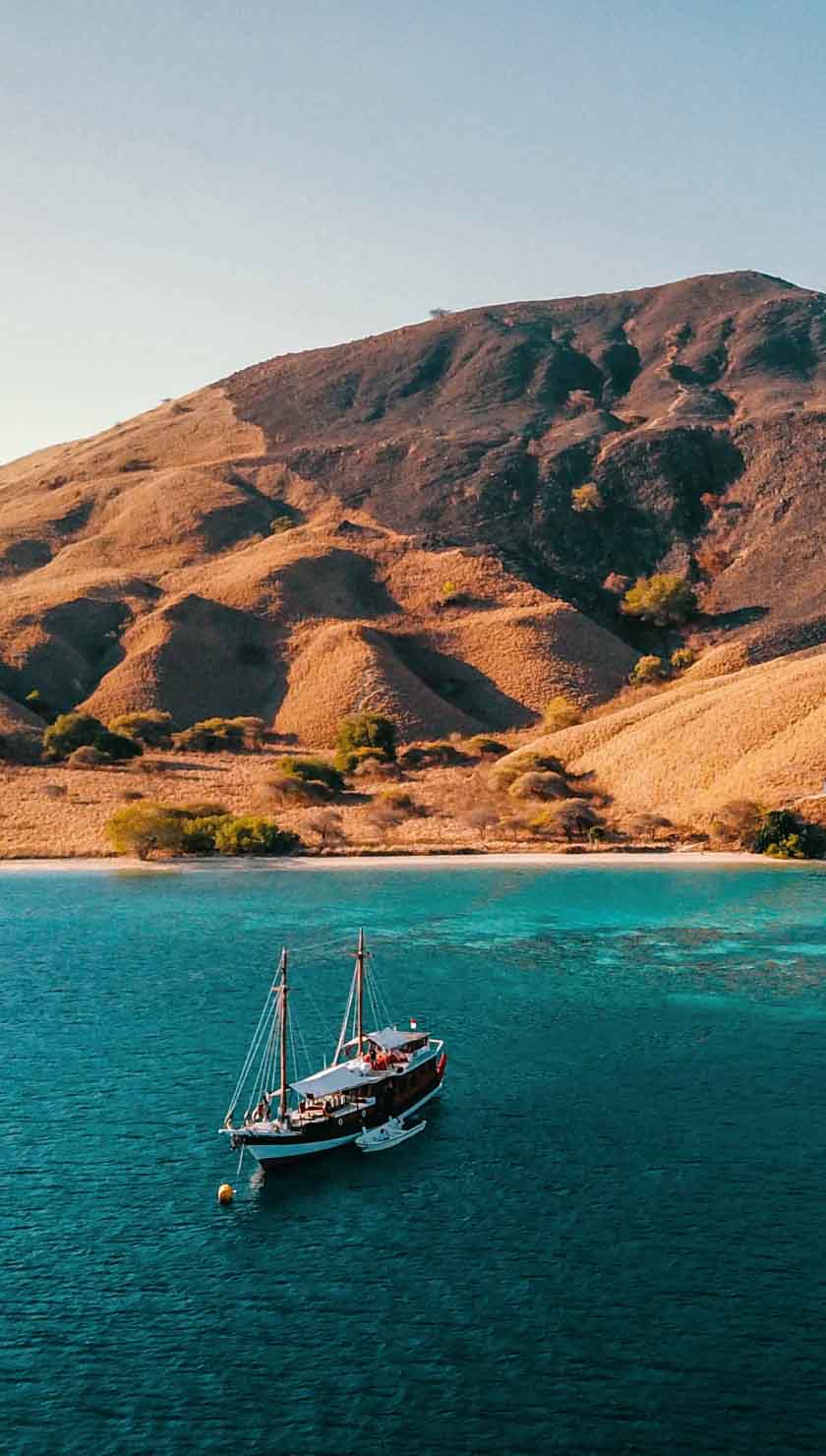Top Things to Do on the Big Island
Most Big Island adventure cruises focus on the island's picturesque leeward coast. This dramatic region is home to a stunning variety of activities with a bit of something for everyone.
Get Up Close and Personal With Ocean Giants
Of all the adventure activities on the Big Island, the Kona manta night dive is the most famous. This unique nocturnal experience allows scuba divers and snorkelers to swim alongside massive reef manta rays as they gently swoop and glide, feeding on microscopic plankton.
If getting in the ocean after dark sounds scary, relax. Huge submerged lights attract the manta rays and make the experience more comfortable for underwater explorers.
Explore the Kona Coast
Rugged, wild, and beautiful, the Kona coast is home to some of the Big Island's most impressive scenery. Exploring here is a highlight on cruise itineraries, with high-speed skiff tours that cover miles of coastline in just a few hours. You'll likely visit lava tubes, sea caves, black sand beaches, and famous landmarks like the monument to Captain Cook.
While you're on the water, be sure to keep an eye out for wildlife. The Kona coast is teeming with marine megafauna like pilot whales, humpbacks, and dolphins, with frequent encounters between December and April.
Hike the Hualalai Volcano
High above the Kona coast, visitors can explore trails traversing cool, misty slopes that lead through native dryland and cloud forests, lava fields, craters, and fissures. Head uphill to the active Hualalai Volcano, home to dramatic lava tubes and other fascinating formations created by multiple volcanic eruptions.
During this experience, you'll gain over 1,000 feet in elevation and explore rough, uneven terrain. Wear comfortable hiking clothes and shoes, and don't forget to pack plenty of sun protection!
Snorkel World-famous Kealakekua Bay
The Big Island is home to over 1,000 types of fish, 149 of which are native only to Hawaii. Visitors can encounter most of these colorful species while swimming and snorkeling in Kealakekua Bay, one of the region's best-preserved Marine Life Conservation Districts. This bay also boasts surprisingly diverse underwater landscapes, with craggy reefs, delicate coral gardens, and massive bommies visible from the surface.
Kealakekua Bay is also home to plenty of larger wildlife, with sea turtles, friendly pods of spinner dolphins, and occasional sightings of supersized animals like whale sharks - the world's largest fish.
Learn About Ancient Hawaiian Fishing Techniques
Native Hawaiians have relied on the ocean for sustenance since settling on the islands. They built massive structures to make fishing easier, including ponds that used stacked rocks and sluice drains to keep big fish in and traps that allowed crashing waves to enter during high tide, leaving behind whatever wildlife they contained.
Big Island cruises visit Kaloko-Honokohau National Historical Park, where guests can tour the Kaloko fishpond and the Aiopio fish trap and learn about ancient Hawaiian fishing methods.
Top Tips for Visiting the Big Island
While most visitors call this destination the Big Island, it's technically named Hawaii. Keep this in mind when discussing your travel plans to avoid confusion.
Because the Big Island is home to many different climates and natural environments, visitors should pack for various weather. You can expect warm afternoons with intense equatorial sunshine, cool breezy evenings, and the occasional intense tropical downpour. You'll also want to bring binoculars and a camera with zoom capabilities to view and capture this biodiverse island's stunning scenery and wildlife.
Don't leave the Big Island without trying a cup of Kona coffee. It's the best in the archipelago!
Best time to cruise the Big Island
Hawaii's Big Island is a year-round adventure cruise destination with comfortable weather every month. Daytime temperatures range from the high 70s to the low 80s, with cooler nights often dropping to the low 60s.
Many visitors consider September through November the best time to explore the Big Island, thanks to lower prices and uncrowded attractions. However, wildlife enthusiasts should plan their trips during December or January. Though this is peak season and the most expensive time to travel, it's also the best time to spot animals like whales and dolphins.
Where do Big Island cruises depart from?
Most Big Island cruises depart from Kailua-Kona on the island's west coast. This bustling seaside town is the island's second-largest settlement after Hilo and is home to Honokohau Harbor and Ellison Onizuka Kona International Airport. Many Hawaiian small-ship cruises, like Molokai, start on the Big Island and end elsewhere in the archipelago. So, be sure to plan when it comes to onward travel!
The Big Island is well connected to the western continental US, with multiple flights arriving and departing daily. Domestic flights make it easy to hop around the archipelago, with connections to Honolulu, Kahului, and even Hilo.











